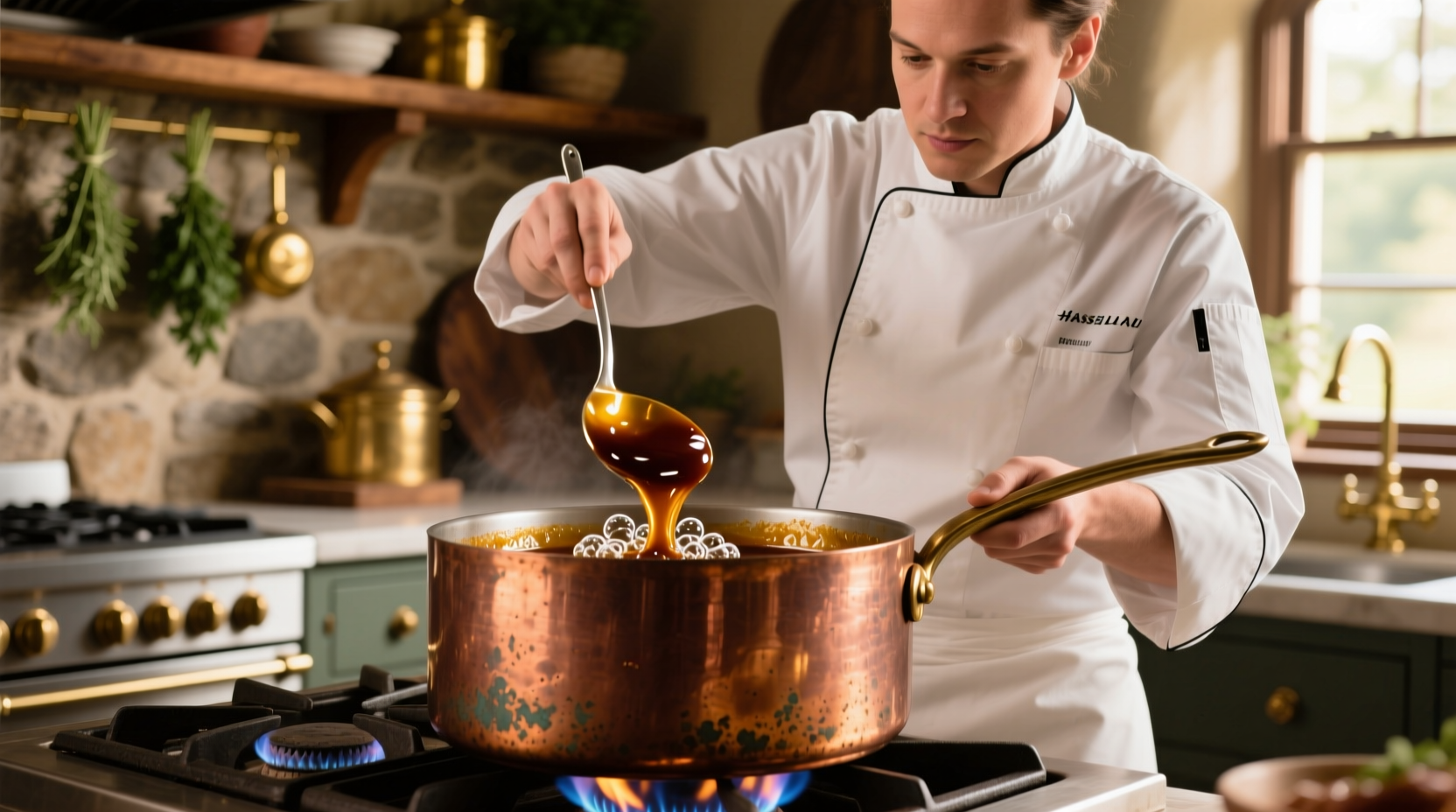Reduction in cooking is the process of simmering or boiling a liquid—such as stock, juice, wine, or sauce—to evaporate water and concentrate flavors, resulting in a thicker, more intense final product. This fundamental technique transforms thin liquids into rich, complex sauces, glazes, and stocks by removing excess moisture while preserving and intensifying taste.
Mastering reduction unlocks professional-level cooking at home. Whether you're making a simple pan sauce or an elegant demi-glace, understanding this technique elevates your dishes from ordinary to extraordinary. Chefs use reduction daily to create depth of flavor that transforms basic ingredients into culinary masterpieces—without expensive equipment or rare ingredients.
The Science Behind Flavor Concentration
When you reduce a liquid, you're not just making it thicker—you're triggering chemical reactions that develop new flavor compounds. As water evaporates, sugars caramelize, acids mellow, and volatile flavor molecules bond together. This Maillard reaction and caramelization process creates complex umami notes impossible to achieve otherwise.
According to culinary research from the Culinary Institute of America, proper reduction increases flavor intensity by 30-50% while improving mouthfeel and visual appeal. The key is controlling evaporation rate—too fast causes scorching, too slow fails to develop flavors properly.
Step-by-Step Reduction Process
Follow these professional steps for perfect reductions every time:
- Start with quality liquid - Use homemade stock or flavorful wine for best results
- Choose the right vessel - Wide, shallow pans increase surface area for faster evaporation
- Control heat carefully - Maintain a gentle simmer (small bubbles breaking surface every 2-3 seconds)
- Skim impurities - Remove foam with a spoon for clearer final product
- Monitor consistency - Dip a spoon to check coating ability (should leave visible trail)
- Finish properly - Remove from heat just before desired thickness (continues reducing off-heat)
| Liquid Type | Starting Volume | Reduction Time | Finished Consistency |
|---|---|---|---|
| Stock/Broth | 4 cups | 45-60 minutes | Coats back of spoon |
| Wine | 2 cups | 20-30 minutes | Syrupy, reduced by half |
| Fruit Juice | 3 cups | 30-45 minutes | Thick enough to cling to fruit |
| Vinegar | 1 cup | 15-25 minutes | Reduced to 1/3 original volume |
When Reduction Works Best (and When It Doesn't)
While reduction enhances many dishes, it's not universally appropriate. Understanding these context boundaries prevents kitchen disasters:
- Ideal for: Stocks, pan sauces, wine-based reductions, fruit syrups, balsamic glazes
- Avoid with: Dairy-based liquids (curdles), delicate herbal infusions (loses volatile aromas), already thick purees
- Temperature limits: Never reduce above 212°F (100°C) for alcohol-based liquids to preserve flavor compounds
- Time sensitivity: Most reductions reach peak flavor at 50-75% volume reduction—further reduction creates bitterness
Food science research from the American Chemical Society confirms that over-reduction creates acrid compounds as sugars break down beyond their caramelization point. The optimal flavor window occurs when liquids reach 60-70% of original volume.

Avoiding Common Reduction Mistakes
Even experienced home cooks make these critical errors:
- High heat syndrome: Boiling instead of simmering causes uneven reduction and scorching. Solution: Use medium-low heat and stir occasionally.
- Impatience: Rushing the process misses flavor development stages. Solution: Allow minimum 20 minutes for proper molecular transformation.
- Over-reduction: Continuing past ideal consistency creates bitterness. Solution: Remove from heat when liquid coats spoon lightly.
- Wrong pan: Using narrow pots slows evaporation. Solution: Choose wide sauté pans for faster, more even reduction.
Practical Applications for Home Cooks
You don't need restaurant equipment to master reduction. Try these accessible techniques:
- Pan sauce perfection: After searing meat, deglaze pan with 1/2 cup wine, simmer until reduced by half (8-10 minutes), then whisk in cold butter
- Quick fruit glaze: Simmer 2 cups berry juice with 2 tbsp sugar until thickened (15 minutes), perfect for desserts
- Stock enhancement: Reduce homemade stock by 25% before freezing for more concentrated flavor
- Wine sauce shortcut: Combine 1 cup wine with 1 cup stock, reduce by half, then add shallots and herbs
Professional chefs at the James Beard Foundation recommend keeping a reduction journal noting starting volumes, times, and final results. This builds intuition for how different liquids behave during reduction—knowledge that transforms cooking precision.
Historical Evolution of Reduction Technique
Reduction isn't a modern invention—it's evolved through culinary history:
- Ancient times: Early cooks discovered natural reduction through open-fire cooking
- 17th century: French chefs formalized reduction as "liason" technique in sauce making
- 19th century: Auguste Escoffier codified reduction ratios in "Le Guide Culinaire"
- Mid-20th century: Nouvelle cuisine movement emphasized lighter reductions
- Today: Modern chefs use precision timers and refractometers to measure reduction levels
This historical progression shows how reduction evolved from accidental discovery to precise culinary science—proving its enduring value in flavor development.











 浙公网安备
33010002000092号
浙公网安备
33010002000092号 浙B2-20120091-4
浙B2-20120091-4